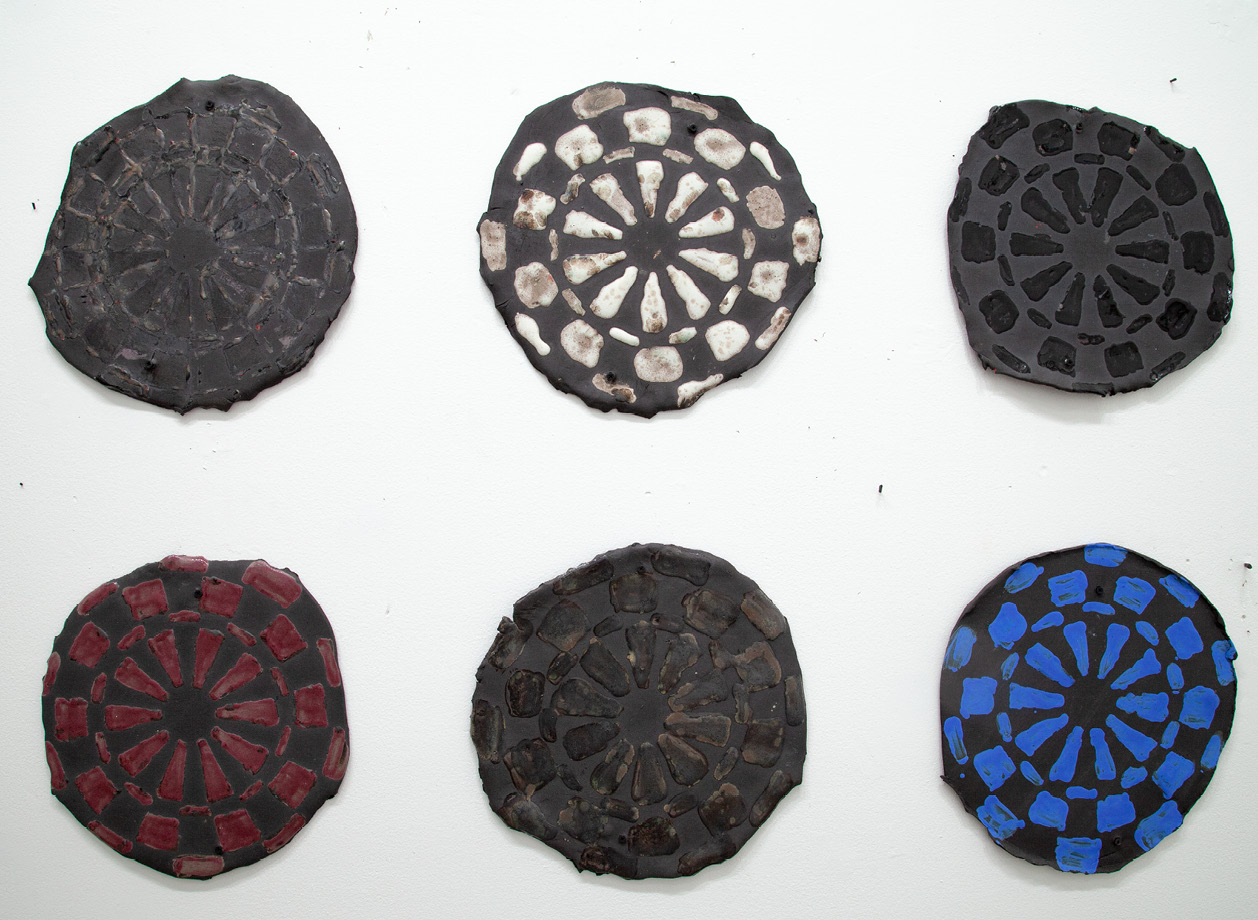Don’t hate the metaphor, hate the estrangement of Forms, one might say—or at least that’s the phrase that came to me in light of ceramicist/conceptual artist Alex Miller’s debut exhibition. Mounted on one wall, a 36-piece edition of handmade ceramic “dart boards” are hung six-by-six, literal targets for another Form in the exhibition, handmade ceramic darts, each priced contemporarily hip at a flat U.S. $10 (Venmo accepted!). Miller doesn’t burrow deep into the abstruse, though; Break Room (all works 2018), name implying, is a mockery of “Capital” where commodified “art” (i.e. non-functional darts) is mere vessel to destroy unobtainable, theoretically invaluable “Art” (i.e. aestheticized dartboards). With no aural components, and no cajoling huckster, a carnivalesque voice is still implied: “Last chance, folks, buy more darts, smash more boards, everything must be destroyed!”
Once you see the facepalming-obvious metaphor, you can’t unsee it, though: Play Capitalism; Capitalism particle-izes you. The repressed joy in Miller’s work comes in standing around, “playing” the game: art perusal, art talk, art schmoozing. All the while, the “art” itself, in this case the conceptual dialectic of “purchase-destruction,” lingers amidst patrons like a smugly glorious flatulence. If Reality be dead, at least we honor its putrefying corpse.
Superficially, the remaining Forms of the exhibition seem amiss thematically. Approach Miller’s exhibition more detective-like and revelation crystallizes. First clarification: the actual medium of aforementioned Forms, darts and dartboards, isn’t really “ceramic;” it’s the concept of Vicissitude, a sub-species of Time. Pragmatically speaking, the exhibition cares little for clay, instead, making its focus the aleatoric transformation from definite Form to undefined Chaos.
Two Forms remain. One is a series of seemingly arbitrary slabs, each connected in lined series, by wire. The ceramic tiles, in alternating sizes and dimensions, are the physicalization of Morse code. Four pieces spell out four messages, though one seems immediately pertinent to Break Room’s vicissitudinal super objective. The grandest ceramic wire-sculpture reads: “7 billion is too many, but I don’t want to die.” Let that sink in. A Heideggerian sequence, if ever.
The final Form: a non-functional claw machine entitled Please Don’t Play Me—perhaps too kitschy/playful to be esteemed by Old Guard critics, Miller’s redeeming choice would be the ceramic roses entombed in the seemingly archaic machine. Now, the true aesthetic drive is revealed: Break Room is not about static Forms in the moment; it’s a handful of objects begging us to imagine ourselves from beyond the grave, from beyond Capitalism itself. A good Buddhist might ask: What would it feel like to sift through the woebegone relics of one’s own collapsed civilization?


